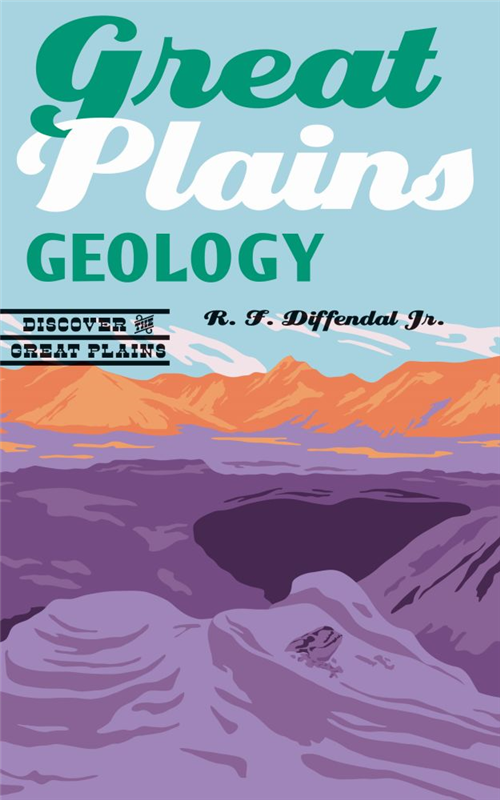
Lincoln, Neb. – Where did all the sand in the Nebraska Sandhills come from? Why do the Black Hills stick up in the middle of flat lands? Why does the Great Plains tilt downward toward the east?
“Great Plains Geology,” a new book by University of Nebraska-Lincoln Research Geologist Emeritus Robert Diffendal, answers these questions and many more by digging at the geologic bedrock of the Great Plains.
This book is the second in the “Discover the Great Plains” small book series, published by the Center for Great Plains Studies and the University of Nebraska Press; Richard Edwards is series editor. The series brings a variety of Great Plains topics to general audiences in friendly, short, and easy-to-digest packages.
Diffendal’s contribution to the series tells the story of how the Great Plains was geologically formed, from plate tectonics and a vast inland sea to the present-day surprising buttes, rolling valleys, and rocky formations. This background sets the stage for the guide-book feel of the rest of the book. With 64 images of many of the Plains’ most breathtaking geologic sites, readers can learn about what makes the Great Plains so geologically interesting and beautiful. The detailed instructions on visiting each site makes the book handy for Great Plains road trips.
The book is available at the University of Nebraska Press website and at the Great Plains Art Museum, 1155 Q St., Lincoln, Neb.
Forthcoming series titles:
- “Great Plains Bison,” by Dan O’Brien, wildlife biologist, bison rancher, novelist
- “Great Plains Literature,” by Linda Pratt, UNL Professor Emeritus, English
- “Great Plains Weather,” by Ken Dewey, Applied Climate Science Mission Area Leader, School of Natural Resources, UNL
- “Great Plains Politics,” by Peter Longo, UNK Professor, Political Science
- “Great Plains Birds,” by Larkin Powell, Professor, School of Natural Resources, UNL
Visit go.unl.edu/gp-small-books for more information.
Diffendal was a professor in the School of Natural Resources, originally with the Conservation and Survey Division. He retired in 2003, but remains active in the school.
The Center for Great Plains Studies
More details at: http://www.nebraskapress.unl.edu/bison/9780803249516/